Had you ever heard of Antoine Caron (1521-1599)? I hadn’t, even though I saw some of his tapestries in Fontainebleau last year in the exhibition “L’art de le fête à la cour des Valois”. The masterpieces of the show were already three exceptional tapestries lent by the Uffizzi in Florence. In Ecouen’s Musée National de la Renaissance, the eight tapestries commissioned by Catherine de Medici are hanging in a long gallery and they had not been exhibited together since 1624. It is a real coup that the curator Matteo Gianeselli has achieved with the loan of the beautiful “Dionysius the Aeropagite” by the Getty Museum and drawings from the Courtauld Gallery. There are more paintings lent by the Louvre which put forward, at last, this forgotten painter who worked for five kings, from François I to Henri IV, during the Religion wars from 1560 to 1598 and has a large following.
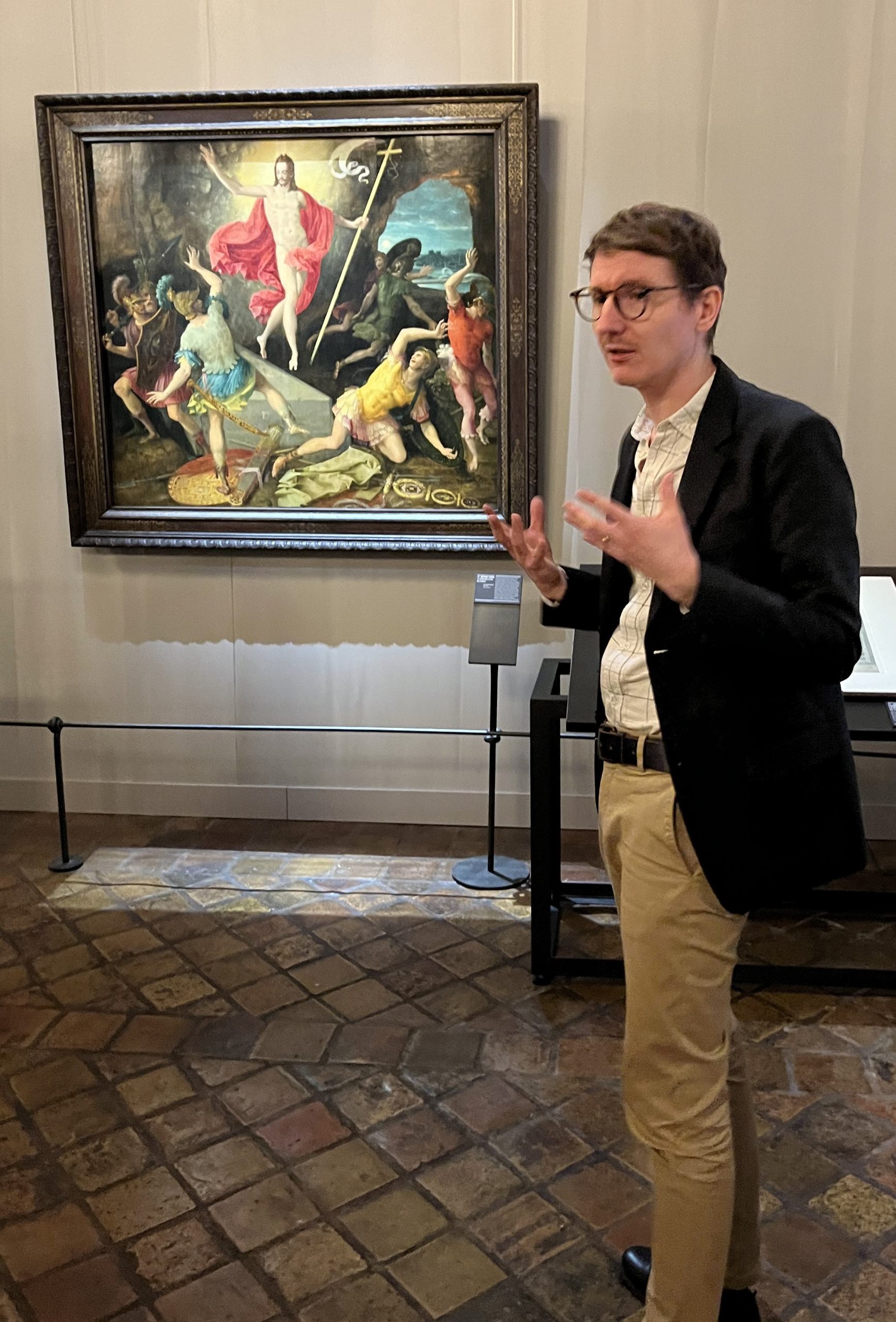
Matteo Gianeselli, the curator with The Resurrection of Christ, 1584, lent by the Musée départemental de l’Oise in Beauvais
The château d’Ecouen built in 1538 by Anne de Montmorency, a rival of the Guise family, is contemporary to Caron’s career and owns many drawings, etchings, and paintings by the artist. Trained in Fontainebleau in 1540 with Primaticcio for whom he painted, Caron was born under François I and raised in Beauvais where he apprenticed with stained glass artisans. He then went to Paris, studied printmaking on rue Montorgueil and created numerous decors for balls at court but also documented the main events of the Valois reigns. His ideas will be used for centuries by other artists.

“The reception of the Polish ambassadors at the Tuileries”, Brussels (Willem de Pannemaker ?) end of the 1570’s, Florence, Galleria degli Uffizi,
© Gabinetto fotografico delle Gallerie degli Uffizi is part of the 8 tapestries commissioned by Catherine de Medici
His forgotten fame was restored in the 19 th century through the numerous drawings of the manuscript of “History of Queen Artemisia”, a present from Nicolas Houel (an apothecary who treated the poor) to Catherine de Medici. A number of works by Niccolò dell’Abate, his other mentor at Fontainebleau complete and illustrate his career. What is amazing in this exhibition is to find, preparatory drawings, tapestries and posthumous paintings of the same theme developed by the artist. An example is “The death of Sestos’ wife”, or the “Confrontation of Eli and the Prophets on Mount Carmel”. He inspired many other artists with his models and was extremely famous at the time as can be seen in the book of portraits (a sort of Who’s Who) of the most famous men of the time printed by Leonard Gaultier. Prepared for five years by Matteo Gianaselli, this is his first exhibition and definitely puts Ecouen on the map of “must visit” sites.
The exhibition is on until July 3, at Musée National de la Renaissance Ecouen which can be reached by train from Paris. But I recommend that you drive there and follow the road all the way to Chantilly, 30 mns further North. There you will find the second part of the religion war exhibitions, “Faces of the war of religions” with the fantastic collection of drawings by Clouet and curated by Mathieu Deldicque (until May 21).
Cressol, Rohan, Guise, Coligny, Condé, d’Anjou, Montmorency, all the famous names of the aristocracy were involved in the fights between calvinists and catholics. Born in Noyon, very near Chantilly, Jean Calvin was supported by Coligny and Condé. Guise and Montmorency were defending the catholics. Catherine de Medici was trying to use the ladies of the court to balance the warriors. On 23-24 August 1572, three days after the marriage of Henri IV to Marguerite de Valois, the massacre of St Barthelemy opposed the two religious camps. It was the most tragic and bloody moment of the 16 th century. Henri IV signed the Edit de Nantes in 1598 allowing protestants the freedom of cult. This will be short lived since in 1685, Louis XIV th would revoke it.
The Duc d’Aumale was a passionate collector and accumulated many drawings by Clouet and Quesnel which are shown in the Cabinet des Dessins of Musée Condé. They are an exquisite collection which is rarely shown. In the room of historical paintings, contemporary artist Sabine Pigalle has been commissioned to make some “leurres” (lures). She replaced the Clouet with portraits of her friends which are very successful.
The collection at Chantilly are unique and it has in common with Ecouen all the heritage of Anne de Montmorency. On May 12-14, Les Journées des Plantes will attract garden lovers who can visit the museum for free. On June 3, starts the large Ingres exhibition curated by Mathieu Deldicque.

Léonard Limosin, Portrait of François de Lorraine, Duc de Guise, 1557, Paris Musée du Louvre, at Musée de l’Armée
“The Hatred of the clans 1559-1610”, is the third part of this large event on the War of religions and it takes place at the Invalides in Paris at Musée de l’Armée. There we see more of the war itself with armors worn by Anne de Montmorency and prints of the murder of Henri III. A superb El Greco painting of Cardinal Charles de Lorraine was lent by the Kunsthaus in Zürich. Weapons and maps give a true war feeling to the descriptions of the battle of Jarnac were Prince de Condé was killed, and other torture scenes and St Barthélémy massacres.
The Museum itself is also interesting with a Memorial to General de Gaulle and the beautiful architecture of the Invalides built by Louis XIV. Until July 30, Musée de l’Armée.
What is wonderful about this association of three venues, Ecouen, Chantilly and the Invalides, is to understand how interconnected these actors and families were. Ecouen lent a lot of documents to Musée de l’Armée and the presence of the three curators introducing their own vision of this War of religions was fascinating.
Share this Post
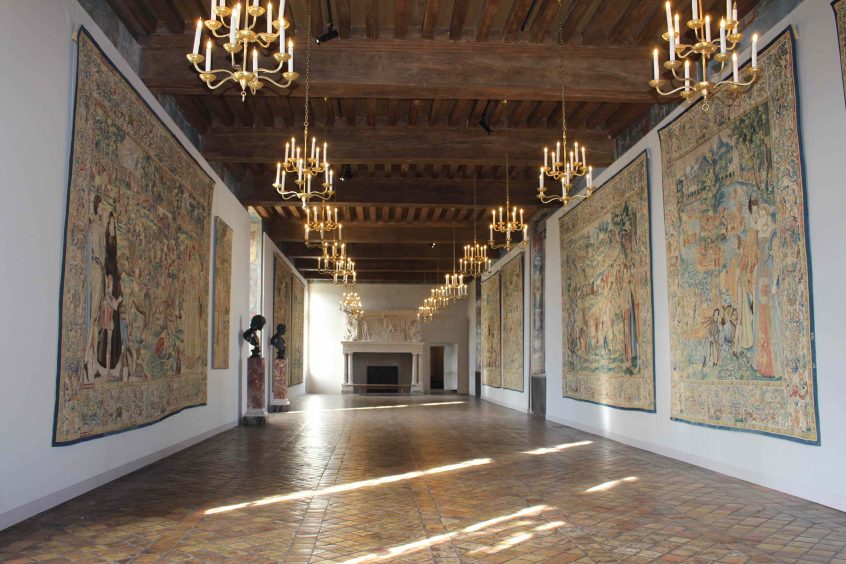
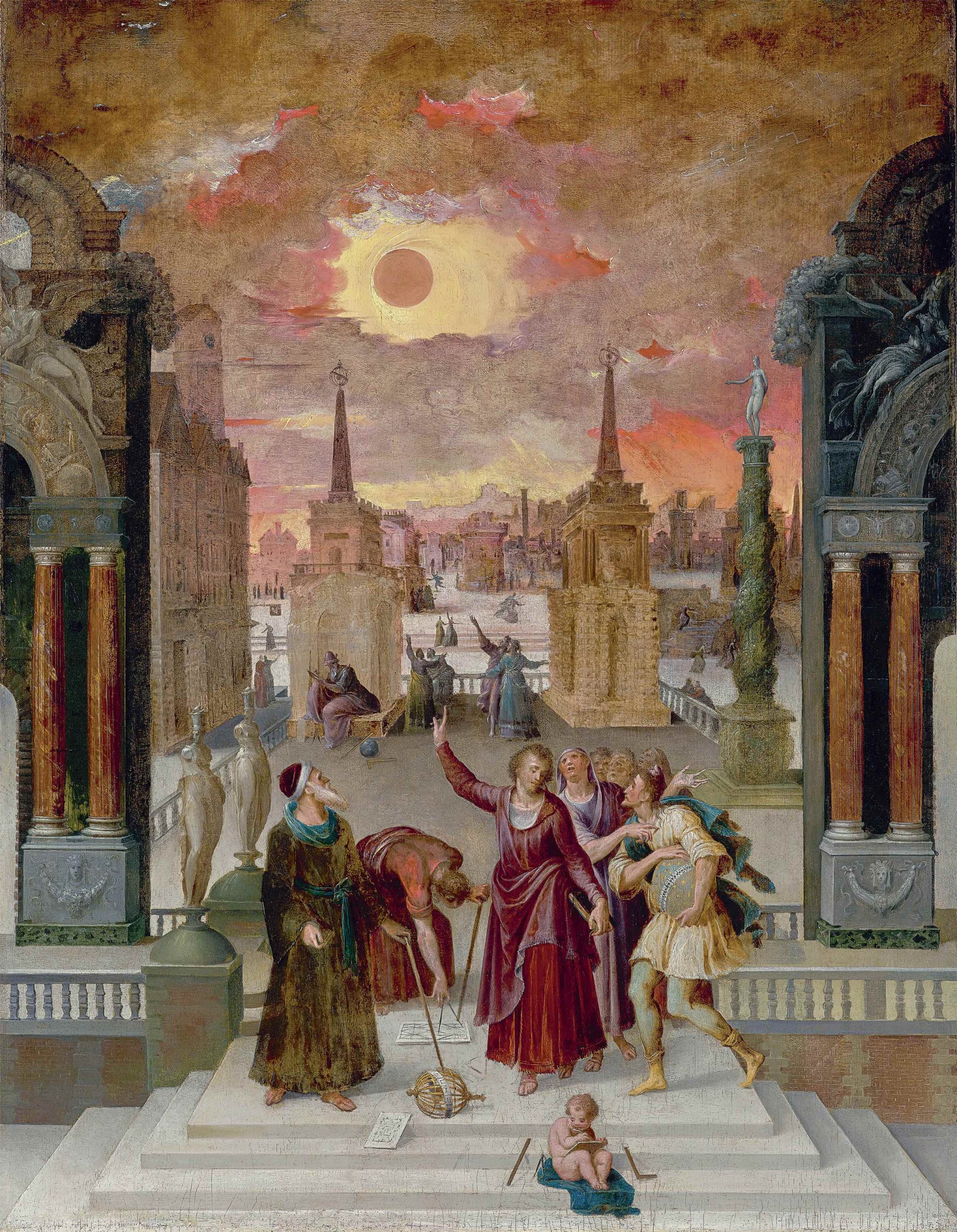
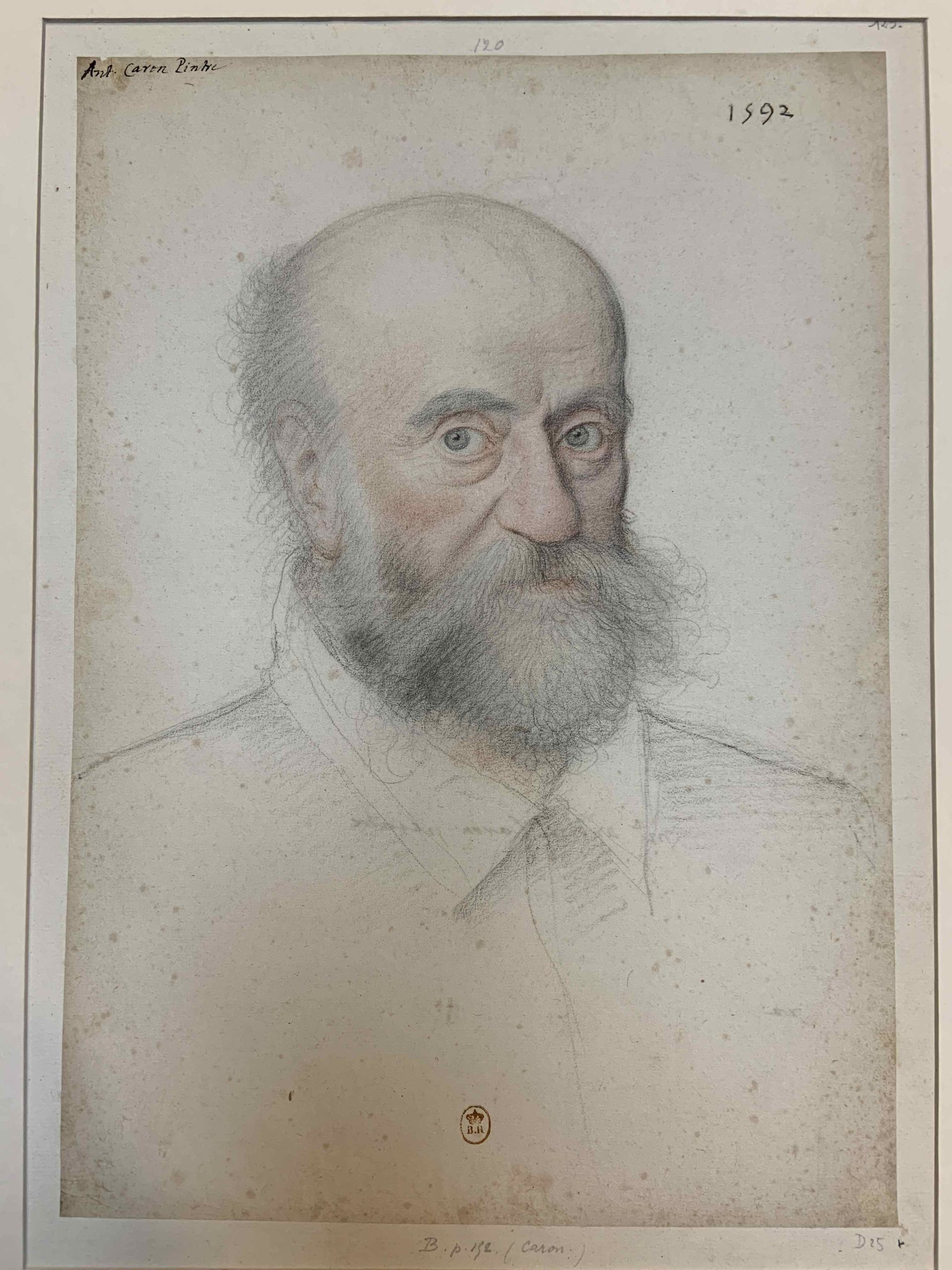



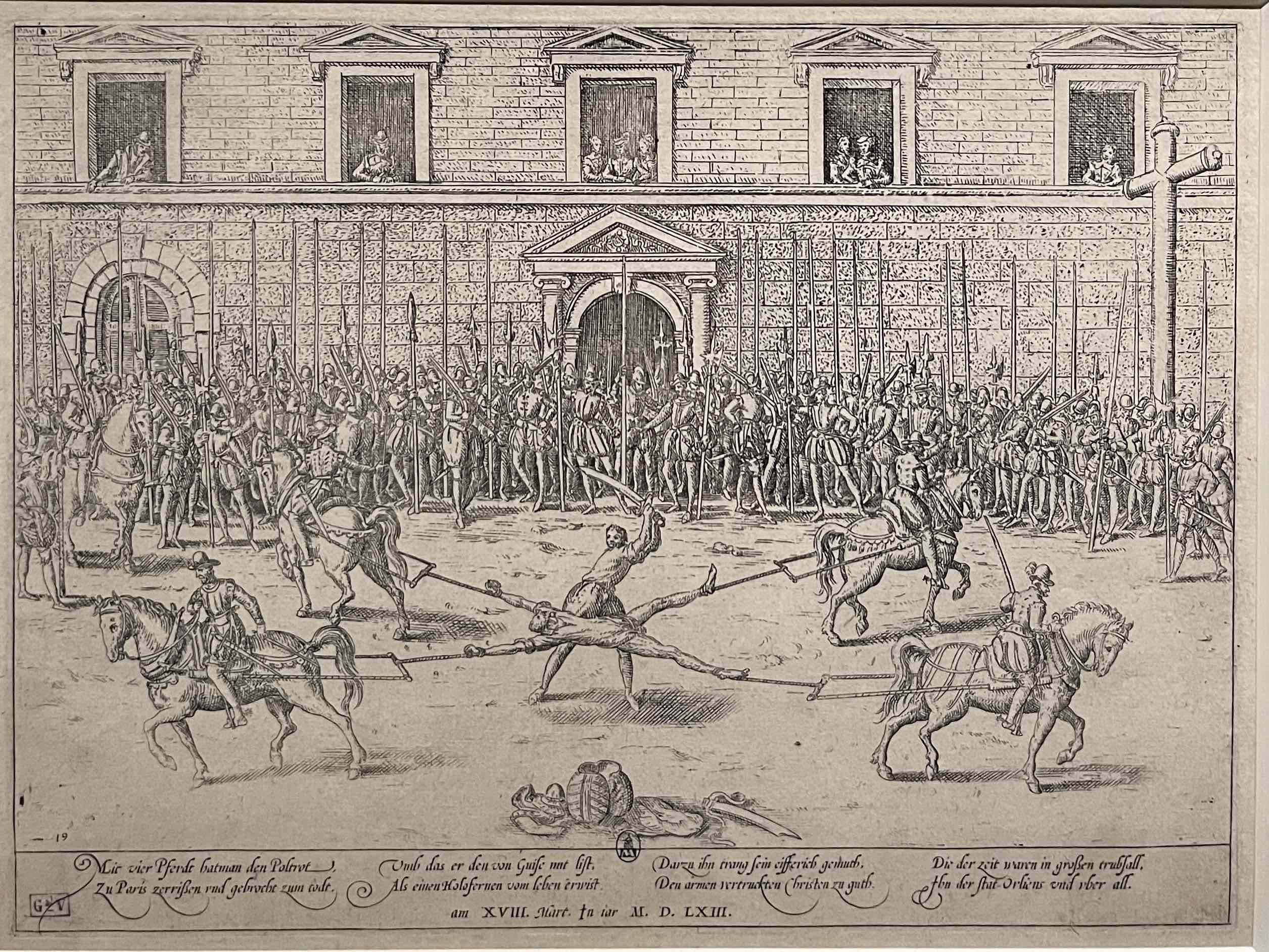
One Comment on “Ecouen, Chantilly and Musée de l’Armée are allies in the War of the religions”
Merci Laure pour vos articles très complets qui nourrissent ma curiosité.
J’aime d’autant la diversité que vous offrez .
Quel plaisir de vous lire !